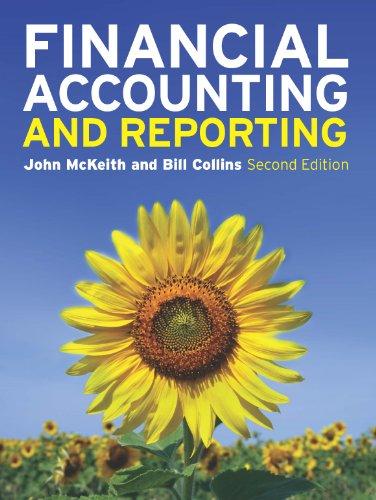Question
1. Parallel Enterprises has collected the following data on one of its products. During the period the company produced 25,000 units. The direct materials price
1.
Parallel Enterprises has collected the following data on one of its products. During the period the company produced 25,000 units. The direct materials price variance is:
| Direct materials standard (7 kg. @ $2/kg.) | $14 per finished unit |
| Actual cost of materials purchased | $322,500 |
| Actual direct materials purchased and used | 150,000 lbs. |
$22,500 favorable.
$27,500 unfavorable.
$50,000 unfavorable.
$22,500 unfavorable.
$50,000 favorable.
2.
Use the following data to find the direct labor rate variance if the company produced 3,500 units during the period.
| Direct labor standard (4 hrs. @ $7/hr.) | $28 per unit |
| Actual hours worked | 12,250 |
| Actual rate per hour | $7.50 |
$7,000 unfavorable.
$12,250 favorable.
$6,125 unfavorable.
$6,125 favorable.
$7,000 favorable.
3.
Fletcher Company collected the following data regarding production of one of its products. Compute the direct materials quantity variance.
| Direct materials standard (6 lbs. @ $2/lb.) | $12 per finished unit |
| Actual direct materials used | 243,000 lbs. |
| Actual finished units produced | 40,000 units |
| Actual cost of direct materials used | $483,570 |
$6,000 unfavorable.
$2,430 favorable.
$3,570 unfavorable.
$3,570 favorable.
$2,430 unfavorable.
4.
A company uses the following standard costs to produce a single unit of output.
| Direct materials | 6 pounds at $0.90 per pound | = | $5.40 |
| Direct labor | 0.5 hour at $12.00 per hour | = | $6.00 |
| Manufacturing overhead | 0.5 hour at $4.80 per hour | = | $2.40 |
During the latest month, the company purchased and used 58,000 pounds of direct materials at a price of $1.00 per pound to produce 10,000 units of output. Direct labor costs for the month totaled $56,350 based on 4,900 direct labor hours worked. Variable manufacturing overhead costs incurred totaled $15,000 and fixed manufacturing overhead incurred was $10,400. Based on this information, the direct labor efficiency variance for the month was:
$3,650 favorable
$2,450 favorable
$1,200 unfavorable
$1,200 favorable
$2,450 unfavorable
5.
Georgia, Inc. has collected the following data on one of its products. The direct materials quantity variance is:
| Direct materials standard (4 lbs. @ $1/lb.) | $4 per finished unit |
| Total direct materials cost varianceunfavorable | $13,750 |
| Actual direct materials used | 150,000 lbs. |
| Actual finished units produced | 30,000 units |
$16,250 favorable.
$30,000 favorable.
$13,750 favorable.
$30,000 unfavorable.
$13,750 unfavorable.
6.
The following information describes a company's usage of direct labor in a recent period. The direct labor rate variance is:
| Actual hours used | 45,000 |
| Actual rate per hour | $15.00 |
| Standard rate per hour | $14.50 |
| Standard hours for units produced | 47,000 |
$22,500 unfavorable.
$52,500 unfavorable.
$29,000 unfavorable.
$29,000 favorable.
$52,500 favorable.
7.
Fletcher Company collected the following data regarding production of one of its products. Compute the total direct labor variance.
| Direct labor standard (2 hrs. @ $12.75/hr.) | $25.50 per finished unit |
| Actual direct labor hours | 81,500 hrs. |
| Actual finished units produced | 40,000 units |
| Actual cost of direct labor | $1,100,250 |
$80,250 unfavorable.
$80,250 favorable.
$61,125 favorable.
$61,125 unfavorable.
$19,125 favorable.
8.
Use the following data to find the direct labor rate variance if the company produced 7,000 units of product during the period.
| Standard: | |
| Direct labor (3.2 hrs. per unit @ $7/hr.) | $22.40 per unit |
| Actual cost incurred: | |
| Direct labor (24,500 hrs. @ $7.50/hr.) | $183,750 |
$26,950 favorable.
$14,700 favorable.
$12,250 favorable.
$12,250 unfavorable.
$14,700 unfavorable.
9.
Parallel Enterprises has collected the following data on one of its products. During the period the company produced 25,000 units. The direct materials quantity variance is:
| Direct materials standard (7 kg. @ $2/kg.) | $14 per finished unit |
| Actual cost of materials purchased | $322,500 |
| Actual direct materials purchased and used | 150,000 kg |
$22,500 unfavorable.
$27,500 unfavorable.
$50,000 favorable.
$22,500 favorable.
$50,000 unfavorable.
Step by Step Solution
There are 3 Steps involved in it
Step: 1

Get Instant Access to Expert-Tailored Solutions
See step-by-step solutions with expert insights and AI powered tools for academic success
Step: 2

Step: 3

Ace Your Homework with AI
Get the answers you need in no time with our AI-driven, step-by-step assistance
Get Started


